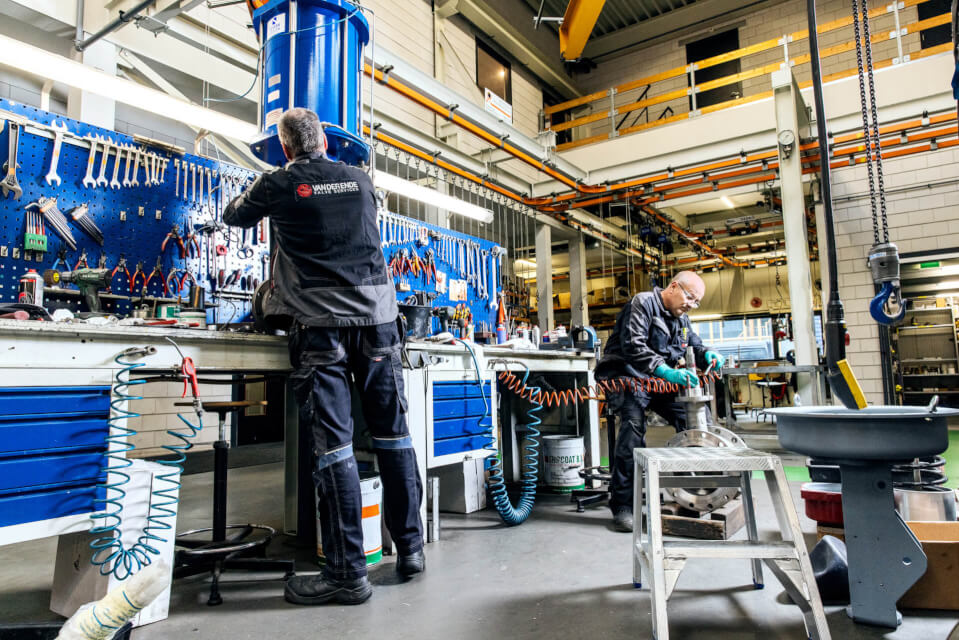Now in Europoort Kringen: Overhaul Again or Replace After All?
Thursday 27 February 2025

In Europoort Kringen, Carl Wierks, managing director at Van der Ende Valve Services, shares his insights on the critical decision between overhauling or replacing valves and control valves. When is overhaul still cost-effective, and when is it wiser to invest in modern technologies? He also discusses innovations such as smart monitoring, rotary valves, and live load systems that not only improve safety and efficiency, but also positively impact the total cost of ownership (TCO). Read the full article below.
“Many valves are as old as the factory in which they were installed. With every maintenance shutdown, we overhaul them and—just like that—they can last for years again. Much cheaper than replacing them with new ones. Or is it?”
Text: Kim de Booij
Overhaul or replace?
Often, companies opt for overhaul out of habit or based on short-term budgets. “Even when replacement is clearly the better option,” says Carl Wierks, managing director at Van der Ende Valve Services. “There comes a point where you have to ask yourself: is overhaul still effective, or should I switch to more modern techniques?”
40% higher consumption
Wierks believes that question should be asked for multiple reasons. “Especially with control valves. These often have pneumatic positioners, and older types consume about 40% more air than modern ones. That translates to immediate economic and sustainability gains.”
Why consider it?
There’s always a risk of leakage with control valves, fittings, and pipelines. “Every company in the process industry assesses such risks. How big are they: acceptable or not? When do they arise: how long can I postpone my maintenance shutdown before the risk becomes too high? And increasingly relevant: what does postponing maintenance do to my energy consumption and emissions?”
Positive effect on TCO
Today, many of these questions can be answered using monitoring technologies. “Positioners have become increasingly ‘smart’ in recent years. Valves are monitored every hundredth of a second, so increased resistance, leakage, or pressure differences are detected in time—allowing for scheduled preventive maintenance. This has a very positive effect on your total cost of ownership (TCO), as it helps prevent unexpected failures and minimize downtime.”
Rotary valves
Smart monitoring isn’t the only innovation in the valve world. Which is why Wierks urges companies to consider replacing old valves. “A key innovation is the development of rotary control valves. These have the same installation dimensions as traditional linear types but operate with a rotating motion. This causes less friction, making them more efficient and less prone to wear.”
Live load
Rotary control valves aren’t suitable for all processes. “That’s true,” Wierks says. “But even linear valves benefit from modern techniques. For example, a live load can be easily added. This system ensures constant packing pressure, resulting in a leak-free seal. The best part: it’s easy to apply, improves safety, and significantly reduces maintenance costs.”
Labor costs
Another reason to consider replacement comes from a different angle: “Labor costs. In the Netherlands, labor has become relatively expensive, which makes overhauls costlier. In the past, you’d typically overhaul everything above 3 inches in diameter and replace anything smaller. Today, it may already be worthwhile to replace a 10-inch valve with a modern one.”
Think beyond the purchase price
So how do you determine whether overhauling or replacing is the smarter choice for your control valves and fittings? “You can’t do that as a company alone, if only because you need companies like Van der Ende Valve Services to understand the cost of overhaul. And that cost varies by application, size, and material. Plus, you only know the real cost once a valve is opened. But don’t just look at purchase prices. Consider what overhauling or replacing your inventory of valves and fittings means in terms of uptime, budget, and sustainability. And think about the consequences of not overhauling or replacing—especially when a valve is rejected during overhaul. That’s where major savings can be achieved.”
Expertise and advice
That’s why Van der Ende Valve Services frequently visits companies on site to assess the situation and offer tailored advice. “Our specialized knowledge goes beyond that of many in-house operators, especially now that the older generation is retiring and being replaced by a less experienced workforce. We’re happy to supplement that knowledge and help companies make the right decisions.”
Calculate the benefits
Naturally, modern technologies are thoroughly tested before entering the market—including on efficiency and sustainability. For example, the specs of a pneumatic positioner will state how much air it consumes. With that data, you can calculate the impact of new valves and fittings on your energy usage and CO₂ emissions.
Van der Ende aims for ISO 14001
Does your supplier or overhaul partner contribute positively to your scope 3 emissions? Van der Ende Valve Services aims to make that crystal clear and is currently pursuing ISO 14001 certification. The company expects to complete the certification by the end of this year.
📍 Maintenance NEXT booth number: 4.000
Source: Europoort Kringen - March 2025